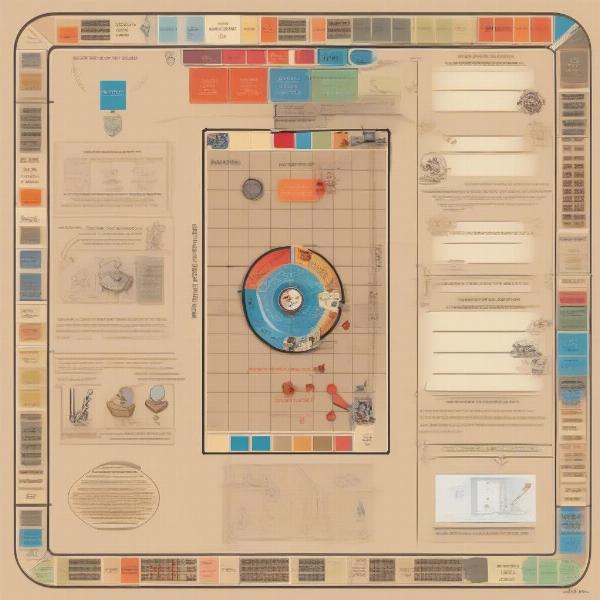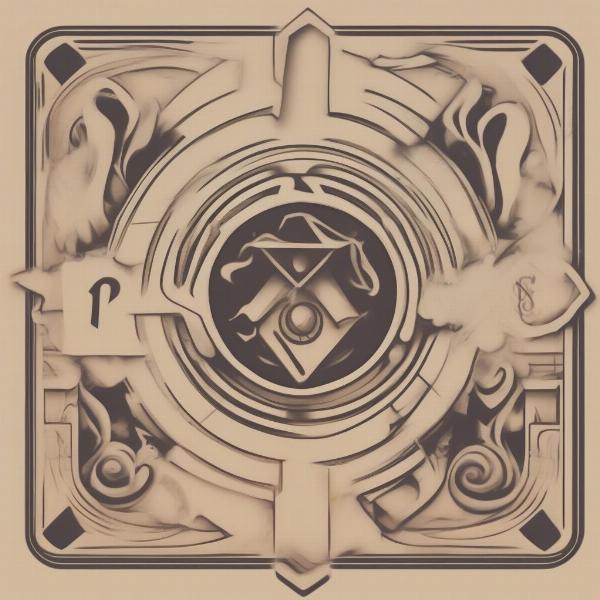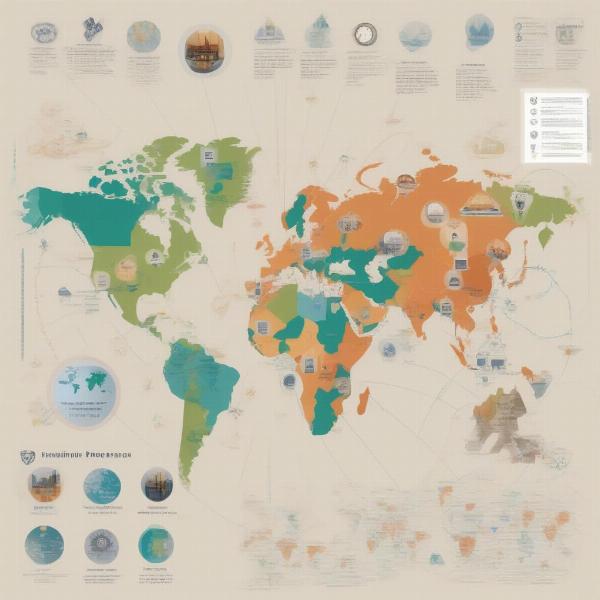Protecting your innovative board game idea is crucial, especially if you dream of seeing it on store shelves. Many aspiring game designers wonder, “How Do I Patent A Board Game?” The truth is, patenting a board game is complex, and often, a utility patent isn’t the best route. This article dives into the intricacies of protecting your board game intellectual property, exploring the options available and guiding you toward the best strategy.
For many board games, a utility patent, which protects the functional aspects of an invention, isn’t the most effective approach. Utility patents are difficult to obtain for board games because they often involve combinations of existing game mechanics. Instead, copyright and trademark protection are typically more suitable. Copyright protects the artistic elements of your game, such as the board design, card art, and rulebook text. Trademark protects the name and logo of your game, preventing others from using similar branding.
Understanding Your Options: Patent vs. Copyright vs. Trademark
So, how do you choose the right protection for your board game? Let’s break down the differences. A patent primarily protects the mechanics and underlying processes of your game, which can be incredibly difficult to define and defend in the board game world. Imagine trying to patent the concept of rolling dice and moving spaces – it’s likely been done before in some form. Copyright, on the other hand, protects the creative expression of your game. Think of the unique artwork on your cards, the specific wording in your rulebook, or the layout of your game board. These are the elements that copyright safeguards. Finally, a trademark protects your game’s brand identity, ensuring no one else can use the same or a confusingly similar name or logo. Choosing the correct combination of these protections is key. To learn more about protecting your creation, read our guide on how to patent a board game.
 Board Game Patent, Copyright, and Trademark Protection
Board Game Patent, Copyright, and Trademark Protection
Copyrighting Your Board Game: A Step-by-Step Guide
Copyrighting your board game is a relatively straightforward process. First, document everything. This includes the rulebook, board design, card text, and any other unique creative elements. While formal registration isn’t mandatory, it provides stronger legal protection. To register, submit your work to the appropriate copyright office in your country. This process usually involves a fee and some paperwork. Remember, copyright protects the expression of your idea, not the idea itself. Someone could create a game with similar mechanics, but they can’t copy your specific artwork or rulebook text. This is why understanding the nuances of copyright is crucial. You can find more details about this crucial process on how to patent a board game.
Trademarking Your Board Game’s Identity
Your game’s name and logo are crucial for its recognition. Trademarking them is essential to prevent others from using similar branding. Start by conducting a trademark search to ensure your chosen name and logo aren’t already in use. Then, file a trademark application with the relevant trademark office. Once your trademark is registered, you have the exclusive right to use it commercially within your designated categories. This protects your brand and prevents consumer confusion. Think of Monopoly – the name and the iconic Mr. Monopoly character are trademarks that contribute significantly to the game’s identity and market presence.
 Trademarking a Board Game Logo
Trademarking a Board Game Logo
When a Utility Patent Might Be Suitable
While rare, utility patents can be appropriate for genuinely novel game mechanics. If your game introduces a truly unique and non-obvious gameplay element, a utility patent might be worth considering. However, be prepared for a rigorous examination process. You’ll need to demonstrate that your mechanic is innovative and not merely a combination of existing game elements. The process of obtaining a utility patent can be lengthy and costly, so careful consideration is necessary. Further information on this topic can be found on how to patent a board game.
Protecting Your Board Game Internationally
If you’re aiming for a global market, international protection is vital. The World Intellectual Property Organization (WIPO) facilitates international trademark and copyright protection. Research the specific requirements for each country you plan to target.
 International Board Game Intellectual Property Protection
International Board Game Intellectual Property Protection
Securing Funding with Strong IP Protection
Solid intellectual property protection not only safeguards your game but also makes it more attractive to investors. Investors are more likely to support a game with well-protected IP, as it demonstrates a clear understanding of the market and a commitment to long-term success.
FAQ: Common Questions About Board Game Patents
- Can I patent a game idea? You can’t patent the idea itself, but you might be able to patent a truly novel game mechanic.
- How much does it cost to copyright a board game? Copyright registration fees vary by country, but they are generally affordable.
- How long does copyright protection last? Copyright protection typically lasts for the life of the author plus a certain number of years.
- What is the difference between a trademark and a copyright? Trademark protects brand identity (name and logo), while copyright protects creative expression.
- Do I need a lawyer to patent a board game? While not strictly required, consulting with an intellectual property lawyer is highly recommended.
- Can I patent a board game that uses dice? Patenting the use of dice is unlikely, as dice are a common game component. However, a unique way of using dice might be patentable.
- How do I protect my board game internationally? WIPO offers resources and guidance for international IP protection.
Protecting Your Creation
Protecting your board game is a multi-faceted process. While the question “How do I patent a board game?” is a common starting point, it’s important to understand the broader picture of intellectual property protection. By focusing on copyright and trademark, and strategically considering utility patents when appropriate, you can safeguard your game and increase its potential for success. Don’t hesitate to seek professional advice from an IP lawyer. Protecting your game is an investment in its future.

